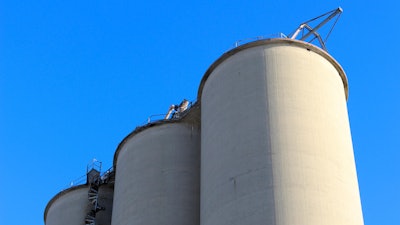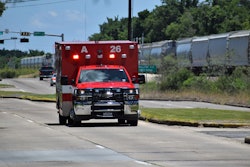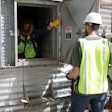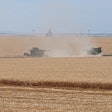
In 2021, there were at least 23 fatal and 36 non-fatal cases involvingagricultural confined spacesaccording to the annual report ofU.S. Agricultural Confined Space-Related Injuries and Fatalitiesreleased byPurdue University's Agricultural and Biological Engineering Department.
The department has been studying incidents related to grain storage and handling facilities since the 1970s in order to better understand the scale and frequency of confined space incidents in agriculture.
The scope of the project expanded from just bin entrapment and engulfment incidents with a grant from theU.S. Department of Labor,and now encompasses incidents involving grain transport vehicles and other agricultural confined spaces.
The data collected has been consolidated into the Purdue Agricultural Confined Space Incident Database (PACSID), providing a comprehensive overview of 2,240 documented cases spanning from 1962 to 2021. The goal of the report and gathering of incident data is to raise awareness, inform prevention strategies, guide policymakers, and enhance safety regulations to mitigate the frequency and severity of these incidents.
Grain storage and handling facilities
报告强调,粮食储存和handling facilities remain the primary setting for incidents, followed by manure storage and handling operations. The occurrence of fires and explosions within grain facilities is also a notable concern. Furthermore, the report sheds light on the increasing financial settlements resulting from civil litigation associated with these incidents.
The report's objectives align with previous years — to draw attention to the problem, develop evidence-based prevention strategies, and offer guidance for policymakers and engineering standard organizations to enhance worker safety and health regulations.
In 2021, the PACSID database documented 59 cases of agricultural confined space incidents. These cases included grain entrapments, falls, asphyxiations, equipment entanglements, grain handling facility fires/explosions, and miscellaneous incidents. Notably, there was a 7.8% decrease compared to the previous year, falling below the 5-year and 10-year averages.
Grain entrapments accounted for the highest proportion of cases, while efforts to identify other incident types have resulted in a broader range of documented incidents. Although non-fatal cases were reported more frequently in 2021, historical data indicates a higher number of fatal cases, suggesting potential under-reporting of non-fatal incidents. The training of emergency first responders has likely contributed to the reduction in fatal cases.
区域模式和报告的挑战
The states with the highest number of documented cases in 2021 were Iowa, Minnesota, Illinois, Ohio, and Wisconsin. However, it is important to note that the surveillance effort may underreport incidents by up to 30% due to inadequate reporting mechanisms. In 2021, only one case involved a child or youth, with most victims being adults over the age of 60. Additionally, a significant portion of incidents occurred on farms or in locations exempt from OSHA regulations concerning grain handling facilities and confined spaces.
Fatal and non-fatal grain entrapments decreased by 17.1% in 2021 compared to the previous year. While the number of non-fatal cases decreased, the fatality rate (38%) was higher than the five-year average. Illinois recorded the highest number of grain entrapments, followed by Iowa and Minnesota.
The Midwest region, known as the Corn Belt, experienced the majority of grain entrapments. Indiana reported the highest cumulative number of cases, attributed to proactive surveillance efforts rather than a higher actual occurrence.
Notably, all documented grain entrapments in 2021 involved males, and no cases involved youths under the age of 21. However, it is likely that this summary does not capture all grain-related entrapments due to reporting exemptions on farms and the underreporting of near misses or self-extrications.
Grain dust explosions occurrences and locations
In 2021, there were seven documented grain dust explosions, resulting in six injuries and one fatality. Five of these explosions were fueled by grain dust, while the fuel sources for two cases remain unknown. The explosions occurred across six different states, including Minnesota, Georgia, Idaho, Indiana, Iowa, and Oregon. Grain elevators accounted for four explosions, with the remaining three incidents occurring in a feed mill, corn mill and an ethanol plant.
Between 1975 and 2021, a total of 409 incidents involving livestock waste storage, handling, transport equipment, and facilities were documented. Of the victims, 59% were fatal, with 85% being male. The average age of the victims was 37, indicating a younger age compared to the average age of U.S. farmers. Incidents primarily occurred in various manure storage facilities, including underground and underfloor storage, above-ground tanks, sump pits, ponds, lagoons, digesters, and transport vehicles.
Training gap and economic impact for confined spaces
研究结果强调需要考虑tent, evidence-based first responder training strategies that cover rescues from all types of agricultural confined spaces. While significant resources have been allocated to grain-related rescue training, it is crucial to assess the justified level of training, determine the appropriate recipients, define desired learning outcomes, and optimize the allocation and location of specialized rescue equipment.
Moreover, the economic impact of agricultural confined space incidents has increased over time. Legal settlements from civil litigation have surpassed OSHA fines, reaching settlements between $1-7 million. These economic penalties highlight the importance of implementing safety standards, adopting best practices, and decommissioning unsafe facilities.
Resources for grain entrapment safety information
To support safety and health training in agricultural confined spaces, valuable resources are available on websites such asAg Confined SpacesandAgriculture Training for Youth. These platforms offer curated training materials, including curricula like "Against the Grain" for young workers in the grain industry and "Gearing Up for Safety" with dedicated lessons on agricultural confined spaces. These resources are freely accessible, providing essential knowledge and guidance to enhance safety practices.
Purdue University's extensive study on incidents in agricultural confined spaces provides critical insights for policymakers, engineering standard organizations, and stakeholders. The latest report emphasizes the importance of continuous efforts to raise awareness, develop prevention strategies, and enhance safety regulations. By addressing training gaps, mitigating risks in livestock waste and handling operations, and promoting comprehensive first responder training, the industry can work towards minimizing the frequency and severity of incidents in agricultural confined spaces.





















